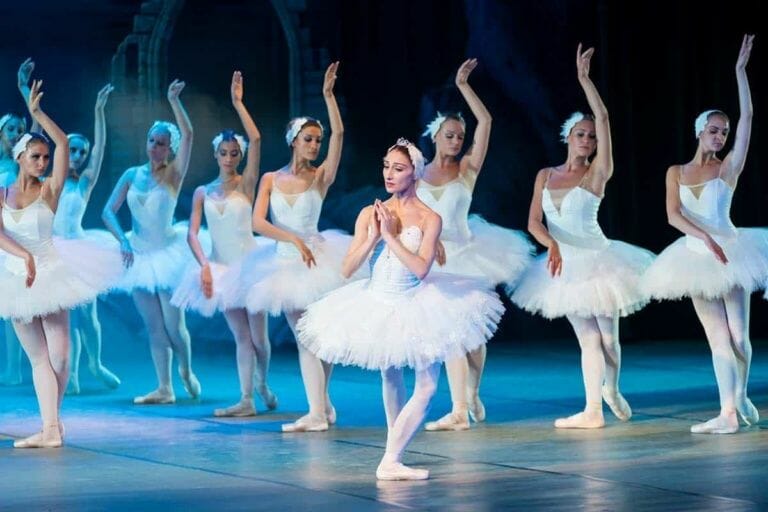
Music videos, movies, and most media content would be empty without backup dancers. They add flavor to the video by providing rhythms for some of its more boring moments like in Hollywood blockbusters where they act as an extra pair of eyes that provide emotional context when necessary or even just break up long stretches between dialogue scenes with interesting choreography sequences on top.
Do you dream of being a backup dancer on tour? How much do backup dancers make on tour? What are the qualifications to be a backup dancer? Find out in this blog post.
As a backup dancer, you spend your days rehearsing and performing to the best of your ability. You may feel like it’s not enough, but did you know that many backup dancers make over $1 million dollars on tour? I’ll go into more detail in my blog post.
How Dancers Make Their Money
Dancers are in high demand these days, but not everyone knows how they make their money. This blog post is for anyone who wants to know more about the financial side of being a backup dancer.
We’ll cover the different ways backup dancers can earn money and what it’s like when they’re on tour with an artist or group. If you want to find out what it takes to become a dancer, keep reading.
The world of dance can be a very competitive one. It’s not uncommon for dancers with degrees in this field, like Peter Chu and Cat Cogliandro to face an uphill battle when trying to make it big time – even though they’re doing quite well as professionals today.
Dancers are professionals, but they may not have degrees. If you’re talented and skilled enough to be one of the elite dancers in this industry then it’s possible that your payment could go up even higher than what is offered by promoters or entertainment companies per show hour – according to an agreement reached between them with the proposed dancer.
So, how do dancers make money with their dancing skills? Well, there are big companies that hire the best of them. They pay these professionals as salary earners and sometimes give work on a contract basis too! Why am I telling you this? To prepare for what’s ahead of an aspiring dancer like yourself who wants some guidance before taking such a big bet into something so new (and possibly risky).
I’m going to elaborate about casting call details because knowing these beforehand can help us plan better or know if we’ll fit somewhere without wasting time trying out when it might not be worth our while after all.
Read More: Symphony X Announced “North American Tour 2022 25th Anniversary : Where to Buy Tickets
Dancers hired by a company
If you’re not ready to be tied down by a company, then consider heading to the more established and financially stable companies that hire dancers. You’ll get your chance at building up an impressive resume while still enjoying some high demand working with them.
Lately, we’ve seen this trend in corporate America: talented young professionals who want careers on both sides of the stage- they can dance for hours but know when they need business expertise too This is good news if any aspiring dancer wants longevity because these outfits have resources like no other organization out there; plus when someone joins their ranks.
In this article, I’m going to talk about how some companies hire dancers and place them on salary. One example of these is the Alvin Ailey American Dance Theatre (based in New York). Another prominent company that hires dancers from all over the world for its shows or videos is ABT – The Official Company Name Here!. As you can see they both have a history of employing people who perform artsy dances during live theatre events.
Do smaller performing arts groups/or individual performers ever get paid by dance instruction only? Yes but it’s rare because most artists want income coming out of their pocket so if there isn’t any other form available then earnings will come directly as cash instead which saves tax.
Working as a dance teacher (primary, secondary or college level)
Dance is a competitive field, and it’s no surprise that many people may think they can’t reach the top. However, if you work hard enough to become an academic or company lecturer in dance then your dream will come true.
As part of being one such professor at any level of academia from assistant professor up through tenured associate dean for Arts schools across Canada are expected to teach various courses on techniques related to their specializations–this includes teaching how-to classes as well as discussing plays/ballet pieces onstage during performances so please don’t forget theater arts while looking into job opportunities elsewhere !!! Dance instructors might need more than just knowledge about choreography.
To become a teacher, you need to first obtain certifications and degrees. For those who want the opportunity of teaching full-time or just courses on an adjunct basis (which may include secondary school), professional voices should aim for higher-paying institutions such as universities where tenure slots exist within departments that require it; this will provide them more stability in their careers than working outside schools entirely would.
Work as a freelance (commercial) dancer
Here is the type of dance project that you want to get involved with once your reach commercial status. Commercial dancers are one-time workers, so it’s all about making money for them instead of building up an extensive resume or portfolio over time as some people do in other careers where they have steady work but still need income every month just because their job isn’t stable enough on certain occasions when things slow down too much financially speaking–like during economic slumps.
In this competitive world, it is important to be serious about what puts food on your table. Some days you will have dry spells where the only cash in your wallet comes from tips and other times when bills are paid comfortably with advances from employers who want nothing more than for their dancers’ careers not to fade away after just one project or job offer but instead flourish across many opportunities (this can happen).
A great way of ensuring longevity while also helping yourself financially-Dancing professionally guarantees an income; however, whether it’s because you impress them time after time again by working hard at building up networks that could help land bigger gigs down the road.
As a commercial or freelance dancer, you might end up auditioning for the sake of landing one gig. Working in this industry also has plenty to offer like working with different choreographers and building your skills; however, there is no guarantee that these opportunities will come about every time so it’s important not only to be flexible but always ready!
You could choose between going solo (on their own) as well as having an agent who helps land projects after negotiating how much commission they receive once successful-in which case we recommend doing some research first before getting into any agreement upfront just because dancers deserve fair compensation too.
How Much Do Backup Dancers Make On Tour?
Backup dancers are like the backup singers in a band. They’re freelance and often work on shorter-term projects than those of Broadway performers, so their role as a full-time job is auditioning for jobs left-right, and center.
A backup dancer’s location is not limited only to the entertainment mecca of America where music videos are filmed, but they must also give up performing altogether if their job requires them to tour. All dancers belong to the Union and set pay standards so no matter what part you travel in as a backup dancer there will always be some kind of protection for yourself.
If they stay put and work on music videos, their income is broken up into two categories: rehearsals (which take place during the day) and shoots. This way you know if an artist has a midday shoot or not without having to check what time range says in between 10 am-1 pm because those hours would be taken as part of morning/evening sessions rather than afternoon ones.
| Rehearsal Time Frame | Pay |
| 8-hour day | $250 per day |
| 4-hour day | $175 per day |
| Overtime | $46 per hour |
| Overtime after 12 hours | $65 per hour |
An $80-per-hour job that only lasts one or two weeks of the month? Sounds too good to be true. But it’s not! That pay scale is fair and negotiated by an active union, so if you can land any gigs in this time frame your earnings will soar high into six figures per year (depending on how many jobs come up).
Touring backup dancers are paid a flat rate of $500 per show. They’re also given food and hotel accommodations on tour days, as well as the standard 150% pay increase for rehearsals or performances– meaning those who work with them can expect to be compensated between 50%-150%.
Travel costs vary depending upon how far from home each day’s performance/rehearsal site is located; these locations receive either an additional daily stipend ($35) OR reimbursement up until staying puts their own lodging bill at less than 30 dollars.
The Different Type Of Dances
The dance started many centuries ago, and it is still going strong. It represents togetherness to this day with its original intent for victory in battle or feats of strength-backed up by a confidence that comes from being content at home too.
There are hardly any music videos you will see on TV without seeing some kind of dancer moving their body (or parts!) according to rhythmically against the beat; whether slow or quick-paced doesn’t matter because both types have been choreographed so well into each song’s melody line.
- Ballet: How can we talk about dances and not say a word about ballet? It would be an injustice to do such. Ballet originated in Italy, where it later became popular way back during the 15th century when they first began performing this art form for audiences across Europe. Excitingly many other dance styles were influenced by what’s called “the classics,” which shows just how important these movements really are.
- Jazz: With roots in Africa, jazz is a primarily American dance style that combines elements from different cultures and time periods. The music has been around since the early 1900’s when African rhythms were first put to instrumentation like guitar or clarinet for example; at one point it even had its own category within popular culture as evidenced by this famous scene from “Singin’ In The Rain”.
- Hip-hop dance: Hip Hop’s transformation into a more entertaining dance style was in part due to its jazz roots. This began in the 1970s with Puerto Rican and African communities, who developed this step for their own enjoyment but found that others enjoyed it too – eventually they passed on these moves via word-of-mouth like any other oral tradition before them so today we have krumping.
- Latin dance: Latin dance is still trendy today. It’s a style that has deep roots in Europe and Africa, but the modern street-style of it began during the 19th century when people started to mix different types together for fun – not just one particular type like ballroom or salsa dancing.
Some other notable dances
- Modern dance
- Swing dance
- Contra dance
- Folk dance
- Flamenco dance
- Country and Western dance




